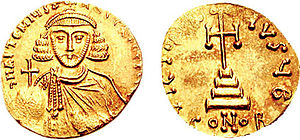| Millennium: | 1st millennium |
|---|---|
| Centuries: | |
| Decades: | |
| Years: |
| 713 by topic |
|---|
| Leaders |
| Categories |
| Gregorian calendar | 713 DCCXIII |
| Ab urbe condita | 1466 |
| Armenian calendar | 162 ԹՎ ՃԿԲ |
| Assyrian calendar | 5463 |
| Balinese saka calendar | 634–635 |
| Bengali calendar | 120 |
| Berber calendar | 1663 |
| Buddhist calendar | 1257 |
| Burmese calendar | 75 |
| Byzantine calendar | 6221–6222 |
| Chinese calendar | 壬子年 (Water Rat) 3410 or 3203 — to — 癸丑年 (Water Ox) 3411 or 3204 |
| Coptic calendar | 429–430 |
| Discordian calendar | 1879 |
| Ethiopian calendar | 705–706 |
| Hebrew calendar | 4473–4474 |
| Hindu calendars | |
| - Vikram Samvat | 769–770 |
| - Shaka Samvat | 634–635 |
| - Kali Yuga | 3813–3814 |
| Holocene calendar | 10713 |
| Iranian calendar | 91–92 |
| Islamic calendar | 94–95 |
| Japanese calendar | Wadō 6 (和銅6年) |
| Javanese calendar | 606–607 |
| Julian calendar | 713 DCCXIII |
| Korean calendar | 3046 |
| Minguo calendar | 1199 before ROC 民前1199年 |
| Nanakshahi calendar | −755 |
| Seleucid era | 1024/1025 AG |
| Thai solar calendar | 1255–1256 |
| Tibetan calendar | 阳水鼠年 (male Water-Rat) 839 or 458 or −314 — to — 阴水牛年 (female Water-Ox) 840 or 459 or −313 |

Year 713 (DCCXIII) was a common year starting on Sunday (link will display the full calendar) of the Julian calendar, the 713th year of the Common Era (CE) and Anno Domini (AD) designations, the 713th year of the 1st millennium, the 13th year of the 8th century, and the 4th year of the 710s decade. The denomination 713 for this year has been used since the early medieval period, when the Anno Domini calendar era became the prevalent method in Europe for naming years.